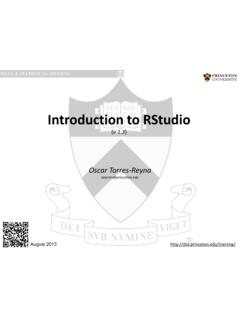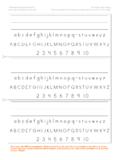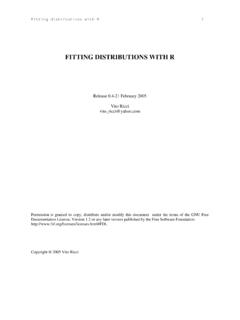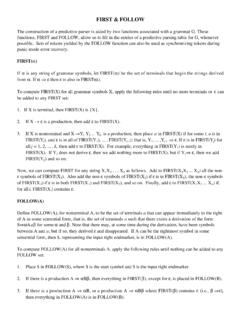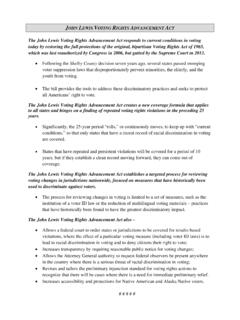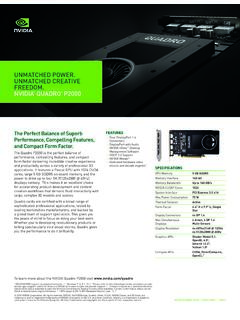Transcription of One Hundred Sixth Congress of the United States of America
1 H. R. 5178 One Hundred Sixth Congressof theUnited States of AmericaAT THE SECOND SESSIONB egun and held at the City of Washington on Monday,the twenty-fourth day of January, two thousandAn ActTo require changes in the bloodborne pathogens standard in effect under the Occupa-tional Safety and Health Act of it enacted by the Senate and House of Representatives ofthe United States of America in Congress assembled,SECTION 1. SHORT Act may be cited as the Needlestick Safety and PreventionAct .SEC. 2. Congress finds the following:(1) Numerous workers who are occupationally exposed tobloodborne pathogens have contracted fatal and other seriousviruses and diseases, including the human immunodeficiencyvirus (HIV), hepatitis B, and hepatitis C from exposure toblood and other potentially infectious materials in their work-place.
2 (2) In 1991 the Occupational Safety and Health Administra-tion issued a standard regulating occupational exposure tobloodborne pathogens, including the human immunodeficiencyvirus, (HIV), the hepatitis B virus (HBV), and the hepatitisC virus (HCV).(3) Compliance with the bloodborne pathogens standardhas significantly reduced the risk that workers will contracta bloodborne disease in the course of their work.(4) Nevertheless, occupational exposure to bloodbornepathogens from accidental sharps injuries in health care set-tings continues to be a serious problem.
3 In March 2000, theCenters for Disease Control and Prevention estimated thatmore than 380,000 percutaneous injuries from contaminatedsharps occur annually among health care workers in UnitedStates hospital settings. Estimates for all health care settingsare that 600,000 to 800,000 needlestick and other percutaneousinjuries occur among health care workers annually. Suchinjuries can involve needles or other sharps contaminated withbloodborne pathogens, such as HIV, HBV, or HCV.(5) Since publication of the bloodborne pathogens standardin 1991 there has been a substantial increase in the numberand assortment of effective engineering controls available toemployers.
4 There is now a large body of research and dataconcerning the effectiveness of newer engineering controls,including safer medical devices.(6) 396 interested parties responded to a Request forInformation (in this section referred to as the RFI ) conductedH. R. 5178 2by the Occupational Safety and Health Administration in 1998on engineering and work practice controls used to eliminateor minimize the risk of occupational exposure to bloodbornepathogens due to percutaneous injuries from contaminatedsharps. Comments were provided by health care facilities,groups representing healthcare workers, researchers, edu-cational institutions, professional and industry associations,and manufacturers of medical devices.
5 (7) Numerous studies have demonstrated that the use ofsafer medical devices, such as needleless systems and sharpswith engineered sharps injury protections, when they are partof an overall bloodborne pathogens risk-reduction program, canbe extremely effective in reducing accidental sharps injuries.(8) In March 2000, the Centers for Disease Control andPrevention estimated that, depending on the type of deviceused and the procedure involved, 62 to 88 percent of sharpsinjuries can potentially be prevented by the use of safer medicaldevices.(9) The OSHA 200 Log, as it is currently maintained,does not sufficiently reflect injuries that may involve exposureto bloodborne pathogens in healthcare facilities.
6 More than98 percent of healthcare facilities responding to the RFI haveadopted surveillance systems in addition to the OSHA 200 Log. Information gathered through these surveillance systemsis commonly used for hazard identification and evaluation ofprogram and device effectiveness.(10) Training and education in the use of safer medicaldevices and safer work practices are significant elements inthe prevention of percutaneous exposure incidents. Staffinvolvement in the device selection and evaluation process isalso an important element to achieving a reduction in sharpsinjuries, particularly as new safer devices are introduced intothe work setting.
7 (11) Modification of the bloodborne pathogens standardis appropriate to set forth in greater detail its requirementthat employers identify, evaluate, and make use of effectivesafer medical 3. BLOODBORNE PATHOGENS bloodborne pathogens standard published at 29 shall be revised as follows:(1) The definition of Engineering Controls (at 29 (b)) shall include as additional examples of controlsthe following: safer medical devices, such as sharps with engi-neered sharps injury protections and needleless systems .(2) The term Sharps with Engineered Sharps InjuryProtections shall be added to the definitions (at 29 (b)) and defined as a nonneedle sharp or a needledevice used for withdrawing body fluids, accessing a vein orartery, or administering medications or other fluids, with abuilt-in safety feature or mechanism that effectively reducesthe risk of an exposure incident.
8 (3) The term Needleless Systems shall be added to thedefinitions (at 29 CFR (b)) and defined as a devicethat does not use needles for: (A) the collection of bodily fluidsor withdrawal of body fluids after initial venous or arterialaccess is established; (B) the administration of medication orH. R. 5178 3fluids; or (C) any other procedure involving the potential foroccupational exposure to bloodborne pathogens due topercutaneous injuries from contaminated sharps .(4) In addition to the existing requirements concerningexposure control plans (29 CFR (c)(1)(iv)), the reviewand update of such plans shall be required to also (A) reflect changes in technology that eliminate orreduce exposure to bloodborne pathogens ; and(B) document annually consideration and implementa-tion of appropriate commercially available and effectivesafer medical devices designed to eliminate or minimizeoccupational exposure.
9 (5) The following additional recordkeeping requirementshall be added to the bloodborne pathogens standard at 29 CFR (h): The employer shall establish and maintaina sharps injury log for the recording of percutaneous injuriesfrom contaminated sharps. The information in the sharps injurylog shall be recorded and maintained in such manner as toprotect the confidentiality of the injured employee. The sharpsinjury log shall contain, at a minimum (A) the type and brand of device involved in theincident, (B) the department or work area where the exposureincident occurred, and (C) an explanation of how the incident occurred.
10 The requirement for such sharps injury log shall not applyto any employer who is not required to maintain a log ofoccupational injuries and illnesses under 29 CFR 1904 andthe sharps injury log shall be maintained for the period requiredby 29 CFR (6) The following new section shall be added to thebloodborne pathogens standard: An employer, who is requiredto establish an Exposure Control Plan shall solicit input fromnon-managerial employees responsible for direct patient carewho are potentially exposed to injuries from contaminatedsharps in the identification, evaluation, and selection of effectiveengineering and work practice controls and shall documentthe solicitation in the Exposure Control Plan.










